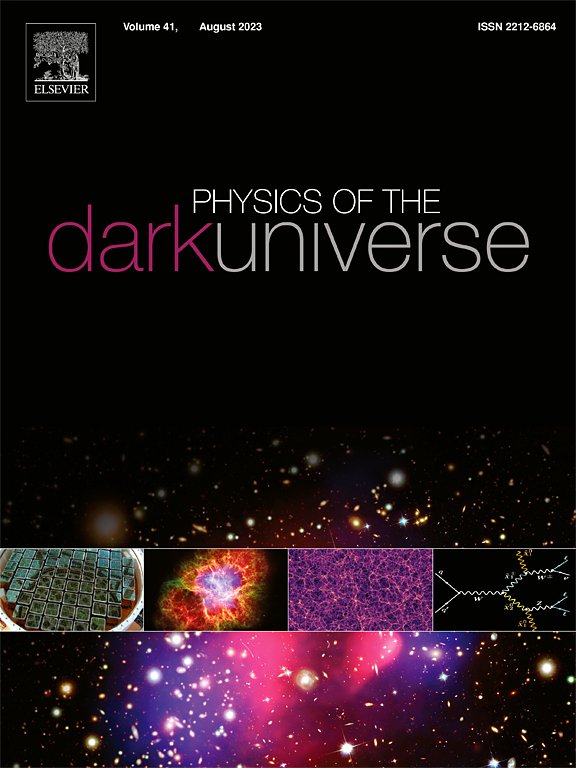Status of early dark energy after DESI: The role of Ωm and rsH0
IF 5
2区 物理与天体物理
Q1 ASTRONOMY & ASTROPHYSICS
引用次数: 0
Abstract
The EDE model is one of the promising solutions to the long-standing Hubble tension. This paper investigates the status of several EDE models in light of recent BAO observations from the Dark Energy Spectroscopic Instrument (DESI) and their implications for resolving the Hubble tension. The DESI Y1 BAO results deviate from the CMB and Type Ia supernova (SNeIa) observations in their constraints on the matter density and the product of the sound horizon and the Hubble constant . Meanwhile, these EDE models happen to tend towards this deviation. Therefore, in this work, it is found that DESI Y1 BAO results strengthen the preference for EDE models and help to obtain a higher . Even considering the Pantheon+ observations for SNeIa, which have an opposite tendency, DESI still dominates the preference for EDE. This was unforeseen in past SDSS BAO measurements and therefore emphasizes the role of BAO and SNeIa measurements in Hubble tension.
求助全文
约1分钟内获得全文
求助全文
来源期刊

Physics of the Dark Universe
ASTRONOMY & ASTROPHYSICS-
CiteScore
9.60
自引率
7.30%
发文量
118
审稿时长
61 days
期刊介绍:
Physics of the Dark Universe is an innovative online-only journal that offers rapid publication of peer-reviewed, original research articles considered of high scientific impact.
The journal is focused on the understanding of Dark Matter, Dark Energy, Early Universe, gravitational waves and neutrinos, covering all theoretical, experimental and phenomenological aspects.
 求助内容:
求助内容: 应助结果提醒方式:
应助结果提醒方式:


